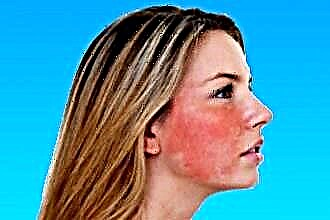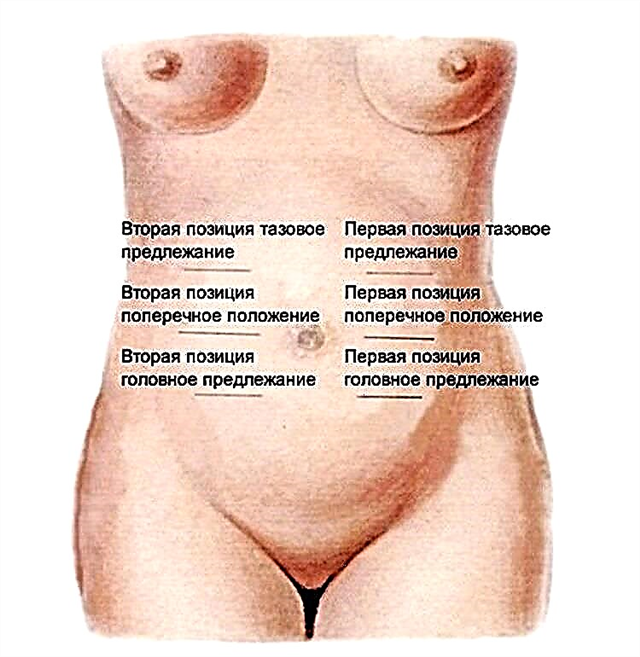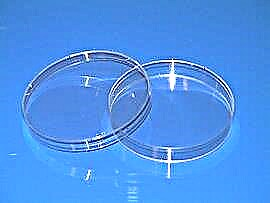The heart performs the work of a pump when pushing blood into the vessels. Through transport channels - arteries and multiple branches of arterioles, blood saturated with oxygen and nutrients is delivered to tissues and organs at the cellular level. High upper pressure (systolic) manifests itself with an increase in the force of pumping blood by the heart in the artery and an increase in the resistance of the vessels.
If the indicators of systolic pressure do not fall during the day, but hold and grow, then this means that hypertension develops. Often, with latent hypertension and high upper pressure, its external signs are absent, but, at the same time, damage to the body is caused. The upper limit can be determined at the moment when the heart muscle contracts. Indicators of lower (diastolic) pressure let you know about cardiac activity during relaxation at the time of blood replenishment with oxygen and its weak movement through the arteries and arterioles.
Systolic blood pressure has lower and upper limits, as well as dangerous indicators that indicate hypertension. Normally, the gap or pulse difference in indicators can be 50 units.
Top pressure indicators
Age (of the year) | Top pressure indicators | ||
|---|---|---|---|
| lower | upper | dangerous | |
| 15 | 70-79 | 110-120 | 121-130 |
| 16-29 | 80-89 | 120-130 | 131-140 |
| 30-39 | 80-89 | 120-130 | 131-140 |
| 40-59 | 85-90 | 135-140 | 141-150 |
| 60-69 | 91-99 | 145-150 | 151-160 |
Causes
It cannot be stated that the factors that cause the upper blood pressure to reach critical levels have been thoroughly studied. There are different forms of the disease that directly affect the increase in blood pressure, as well as inadequate states of the nervous and metabolic systems, including ionic tissue exchange.
The upper pressure exceeds the norm due to the following factors:
1. Mental overstrain in 10-15%, stress, because adrenaline (stress hormone) has an intense effect on the heart. It begins to shrink more often and throw out more blood.
2. An increase in the output of blood from the heart in one contraction with a high concentration of sodium.
3. Spasms of smooth muscles that support the vascular walls, and dysregulation of blood pressure due to high calcium levels.
4. Accumulation of atherosclerotic plaques on the vascular walls (in 20-25%), the development of sclerosis. When the lumen of the arteries narrows, the heart increases its impulses to move the blood, which increases the pressure.
5. Actively active substances that are secreted by the kidneys when blood supply deteriorates. The substances contribute to a steady increase in pressure, including the upper one.
6. Constant intake of drugs:
- oral contraceptives with high doses of hormones;
- drugs that reduce appetite;
- glucocorticoids: "Prednisolone", "Dexamethasone" .;
- remedies for inflammation: "Indomethacin" and others.
7. Symptomatic hypertension, diabetes mellitus, dehydration.
8. Sedentary lifestyle and excess weight.
9. Hereditary factors.
10. Drinking alcohol and salty food, smoking.
Manifestations
As the pressure rises, the blood pressure rises. To resist it, the vessels thicken, and their lumen narrows. Over time, the wall of the arteries becomes low-elastic, brittle, which leads to hemorrhagic infarction (hemorrhage).
Increased upper pressure is manifested by uncomfortable conditions:
- general overwork;
- headache attacks;
- sharp or aching pains in the heart area;
- hypertensive crisis.
With general overwork, the patient becomes irritable, cannot concentrate due to daytime sleepiness and disturbed night sleep. In many patients, the lips turn blue, and the eyeballs turn red.

If the dangerous indicators of upper pressure are exceeded, the appearance of aching and squeezing headaches, intraocular pressure may also increase, which is detected when checking the fundus. There are also atrophic processes in the retina. If, after measuring at rest in adults, the upper pressure shows the figure 160, and in children - 130, then this is the basis for visiting a cardiologist and taking antihypertensive drugs.
The manifestations of high upper pressure often coincide with the symptoms of intracranial pressure. It develops when there is an excess or lack of spinal cord fluid under the skull and its circulation to a specific part of the brain is disturbed. Then in adults:
- lateral and central vision worsens;
- objects are bifurcated;
- “fog” appears in the eyes;
- swelling of the eyelids and face;
- hearing decreases and "makes noise" in the ears;
- the head constantly hurts, the area of the upper cervical vertebrae.
Adults feel weak and tired. In newborns, the seams expand, the fontanelle protrudes and the head grows, squint, blue lips and nails occur. Children after 3 years of age may complain of pain in the temples or crown. They become lethargic, get tired quickly. They are annoyed by bright lighting and outside noise.
If the upper pressure is increased, the left side of the chest will be attacked by sharp or aching pains with a return to the left arm and an irregular heart rhythm. In adults, a hypertensive crisis may occur at rates of 160/100 mm Hg. Art., and in children - 130/100 mm. rt. Art.
Due to the high numbers of upper blood pressure, the coronary arteries and heart muscle are pathologically changed:
- angina pectoris and coronary artery disease occurs;
- the left ventricle increases and cardiac output decreases, so heart failure develops
Safely lowering the upper pressure
What if the myocardium gets used to pressure surges during atherosclerotic vascular lesions, but the person does not feel them? It is possible to lower blood pressure with "Papazol", if it was prescribed by a doctor after examining analyzes, ultrasound of the heart muscle and ECG. More often, individually universal drugs are selected: they can reduce pressure and have an antispasmodic effect - to relax the vessels and eliminate discomfort in the gastrointestinal tract and urinary tract. A sharp jump in the upper indicator is stopped with one capsule of "Nifedipine" with water and using the following recommendations:
- When the temperature drops, the feet are immersed up to 5 times in a basin with hot water (up to 42 ° C) for 2 minutes, and with cold water for half a minute.
- Make vinegar lotions on your feet. Moisten the fabric with apple cider vinegar and water (1: 1) and stand on it.
- Drink calendula tincture on vodka (1:50), 30 drops with water before each main meal.
- A cold compress is applied to the cervical vertebrae. Withstand 20-30 minutes, then rub the neck with massage oil: 1 tbsp. l. vegetable oil or baby glycerin 3-5 drops of fir, cedar, pine or eucalyptus oil.
- Massage the head and neck.
Massage
Regardless of the cause and treatment of high upper pressure, massage is always beneficial: it improves blood circulation and relieves headaches. It is better to entrust the massage procedure to a specialist.
It's important to know. The skin on the neck is easily displaced in front from both sides. On the back of the head, the skin is thick, so it is difficult to displace it. Between the sternocleidomastoid muscle and the trachea, the common carotid artery pulsates, in the fossa under the collarbone is the subclavian artery.
 Movements during head massage should be soft, gentle and relaxing, so as not to damage the lymph nodes and blood vessels located on the neck during the transition to the scalp.
Movements during head massage should be soft, gentle and relaxing, so as not to damage the lymph nodes and blood vessels located on the neck during the transition to the scalp.
The massage is performed with classic movements:
- stroking: flat, enveloping, comb-shaped, gable-shaped and directed from top to bottom;
- rubbing: straight, circular, in the form of strokes and sawing;
- kneading: transverse, longitudinal, pressing, stretching, shifting, pincer-shaped;
- vibrating: in the form of puncturing, light beating, patting and shaking with individual fingers.
Why is massage performed along massage lines? Because they pass along the blood and lymph vessels. From the bridge of the nose, they cross the frontal and parietal bones, go along the neck and towards the trapezius muscle. Passing the behind-the-ear region, they go to the neck from the temple, from the ears - to the trapezius muscle along the lateral surfaces of the neck, from the bridge of the nose - to the crown, from the eyebrow arches - to the temples. Using lines and soft classical movements, you can perform self-massage of the head and cervical vertebrae daily for 3-5 minutes.
Tablets
It is possible to reduce pressure with thiazide diuretics ("Hydrochlorothiazide", "Hypothiazide", "Cyclomethiazide") and sulfonamides ("Indapamid", "Indal", "Acripamide", "Chlorthalidone"), since they can reduce the edema of the vessel walls and increase their lumen.
To reduce high rates and cardiovascular risk for patients after myocardial infarction, with angina pectoris, heart failure and atrial fibrillation, use mono- or combination therapy with beta-blockers:
- non-selective beta-blockers: Carvedilol, Propranol (Anaprilin), Sotalol, Oxprenolol, Nadolol;
- selective beta-blockers: "Atenolol", "Metoprolol", "Bisoprolol", "Celiprolol", "Betaxolol".
With menopause, women are advised to take Betaxolol or Lokren. What if the upper pressure rises in diabetes mellitus? If a patient takes "Glibomet" for diabetes, then in case of an overdose, lactic acidosis may occur, in which pressure decreases and bradyarrhythmia appears, consciousness is confused. But when taking the drug together with alcohol, including drops on alcohol, the upper indicators will go off scale, the symptoms will manifest themselves as headache, vomiting, palpitations. Therefore, diabetics should take this drug under medical supervision and stop taking it if symptoms of lactic acidosis.
Folk remedies
 The bark, flowers and berries of red viburnum are well suited for lowering upper pressure and as a diuretic:
The bark, flowers and berries of red viburnum are well suited for lowering upper pressure and as a diuretic:
- Gruel from pounded berries (5-6 tbsp. L.) With honey (200 ml) insist 2 hours and consume 1 tbsp before meals. l.
- Fresh or frozen berries (100 g) are kept in boiling water (0.5 l) in a bath for up to 20 minutes, after filtration they are mixed with honey or sugar and drunk 50-100 ml before each meal and between them.
- Boil in 250 ml of water - 7-10 g of viburnum bark for 30 minutes and insist in a thermos for 4-6 hours. After filtration, drink 50 ml three times a day.
Therefore, in order to cope with high indicators of upper pressure, it is necessary to strictly follow the doctor's prescriptions, use folk remedies and massage, engage in feasible sports and refuse fatty, fried and salty foods.



